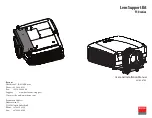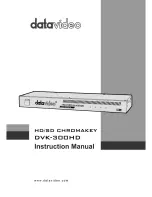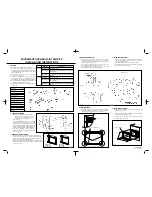
ISO-OXY-2/OXELP
World Precision Instruments
9
SENSOR CARE AND MAINTENANCE
Durability and Handling
The sensor is relatively durable, except for the membrane sleeve. Exercise caution
when handling any sensor to avoid actions that could damage the sensor tip. Pay
particular attention to the sensor membrane, because the membrane is extremely
delicate and improper handling will lead to damage.
Refer to the Probe Unpacking Instructions that came with your sensor for handling
instructions.
CAUTION
: Do NOT scratch the sensor membrane sleeve. Do NOT wipe the
sensor membrane
with anything, even Kimwipes. If necessary, squirt it with
distilled water or compressed air.
CAUTION
: The sensor membrane is easily punctured if it comes into contact
with sharp objects. For example, do NOT let the stir bar come into contact with
the sensor membrane.
Storing the Sensor
The reduction of oxygen and other trace impurities causes a decrease in the surface
activity of the working electrode. This phenomenon is referred to as “poisoning”, and
over time has the effect of gradually reducing the electrode’s capability to generate a
sufficient redox current. With proper care and by following the instructions below a
membrane sleeve should last more than one month. Use the following guidelines to
maximize the life of the electrode:
STANDBY
: If the oxygen sensor is being used on a daily basis, leave the monitoring
device ON continuously with the sensor plugged in and its tip suspended in distilled
water to maintain polarization.
SHORT-TERM
: If the sensor is not to be used for a period of more than 2-3 days,
disconnect it from the monitoring device, and stored it with the tip immersed in
distilled water. This practice reduces the possibility of a gradual reduction of electrode
surface activity (as discussed above) under long-term polarization.
LONG-TERM
: For long-term storage of more than one week, remove the membrane
sleeve, clean the sensor tip with deionized water and dry carefully. Protect the tip and
store the sensor with the membrane removed in a dry, cool environment.
Cleaning the Membrane
The membrane sleeve itself requires very little maintenance. The primary concern is
to avoid damage to the membrane and to keep it as clean as possible. After each use
the membrane should be cleaned by suspending the tip in distilled water for 20-30
minutes to dissolve salts and remove particles which may have accumulated on it.
If the probe was used in a protein-rich solution, the tip should first be soaked in a






































